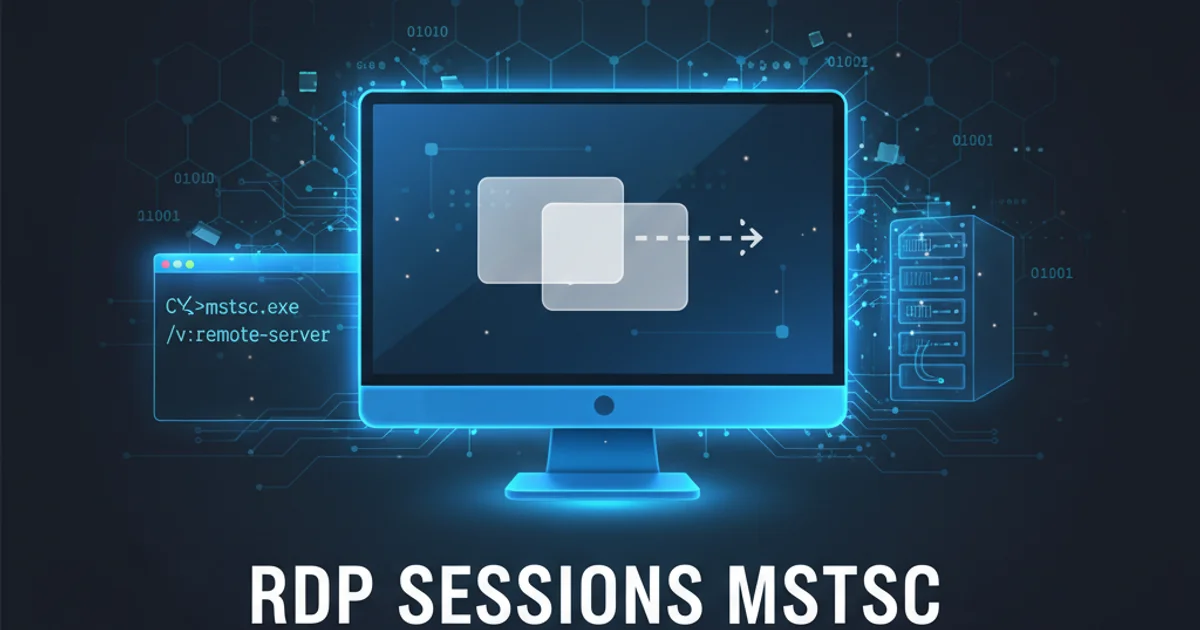RDP sessions mstsc
Categories:
Mastering RDP Sessions with MSTSC: A Comprehensive Guide

Explore the fundamentals of Remote Desktop Protocol (RDP) sessions using the MSTSC client, covering connection methods, configuration, and advanced tips for efficient remote access.
Remote Desktop Protocol (RDP) is a proprietary protocol developed by Microsoft, which provides a user with a graphical interface to connect to another computer over a network connection. The client software for RDP is commonly known as Microsoft Terminal Services Client (MSTSC). This article will guide you through establishing and managing RDP sessions, from basic connections to more advanced configurations, ensuring a smooth and secure remote experience.
Establishing a Basic RDP Connection
Connecting to a remote computer using MSTSC is straightforward. You typically need the IP address or hostname of the target machine and valid credentials. The MSTSC client allows you to save connection settings for frequently accessed systems, streamlining your workflow.
1. Open MSTSC
Press Win + R, type mstsc, and press Enter to open the Remote Desktop Connection client.
2. Enter Remote Computer Details
In the 'Computer' field, enter the IP address or hostname of the remote machine you wish to connect to. For example, 192.168.1.100 or remote-server.example.com.
3. Connect and Authenticate
Click 'Connect'. You will be prompted for credentials (username and password) for an account on the remote computer. Enter them and click 'OK'. If prompted about certificate warnings, you can choose to connect.
Configuring RDP Session Settings
MSTSC offers a variety of configuration options to optimize your remote desktop experience. These settings can significantly impact performance, security, and usability. You can access these options by clicking 'Show Options' in the main MSTSC window.
flowchart TD
A[Start MSTSC] --> B{Show Options}
B --> C[General Tab: Save/Load Settings]
B --> D[Display Tab: Resolution & Color Depth]
B --> E[Local Resources Tab: Devices & Printers, Clipboard]
B --> F[Experience Tab: Performance Optimization]
B --> G[Advanced Tab: Server Authentication]
C --> H[Connect]
D --> H
E --> H
F --> H
G --> H
H[RDP Session Established]Flowchart of RDP Configuration Options in MSTSC
Key configuration areas include:
- Display: Adjust screen resolution and color depth to match your preferences or network bandwidth. Lower settings can improve performance over slower connections.
- Local Resources: Configure what local resources (e.g., clipboard, printers, drives) are available within the remote session. This is crucial for tasks like copying files or printing remotely.
- Experience: Optimize performance based on your connection speed. Options like 'Persistent bitmap caching' and 'Desktop background' can be toggled to reduce bandwidth usage.
- Advanced: Manage server authentication settings and RDP Gateway configurations for secure connections through firewalls.
Command-Line Usage and Advanced Scenarios
While the GUI is user-friendly, MSTSC also supports command-line parameters, allowing for scripting and automation of RDP connections. This is particularly useful for administrators or for launching specific sessions with predefined settings.
mstsc /v:192.168.1.100 /f /admin
mstsc /v:remote-server.example.com /w:1024 /h:768 /console
mstsc "C:\Users\YourUser\Documents\MyRDPConnection.rdp"
Examples of MSTSC command-line parameters
Common command-line switches include:
/v:<server>: Specifies the remote computer to connect to./f: Starts the client in full-screen mode./adminor/console: Connects to the administrative session of the server./w:<width>and/h:<height>: Sets the width and height of the remote desktop screen./edit: Opens an existing.rdpfile for editing.
For more complex scenarios, you can create and save .rdp files, which are essentially text files containing all your connection settings. These files can then be launched directly or referenced via the command line.